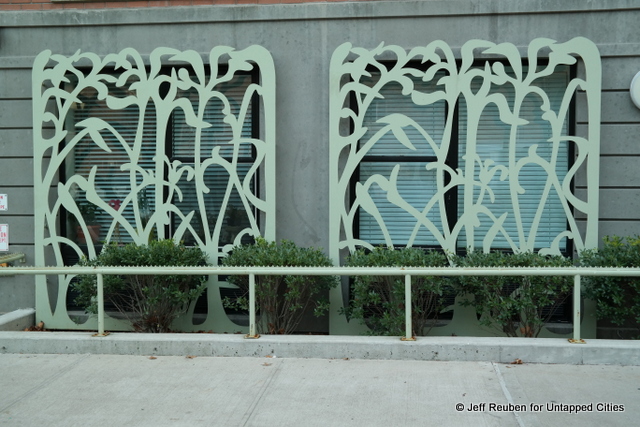
A few designers in New York are working to reimagine the prosaic window grille, transforming it from a utilitarian security barrier to an element that is both functional and an aesthetic asset, with attractive and original designs. The close proximity between the public and private realm offered by high density urban environments, can be both thrilling and challenging. It’s exciting to step out of one’s home or business and instantly enter into what Jane Jacobs described to as the “sidewalk ballet.”
However, being so close to the action, there are also concerns about security and privacy. The need for a buffer between public and personal spaces is particularly acute for ground floor spaces with windows facing onto the sidewalk. The window grille is the common means of addressing those concerns. They are also typically ugly.
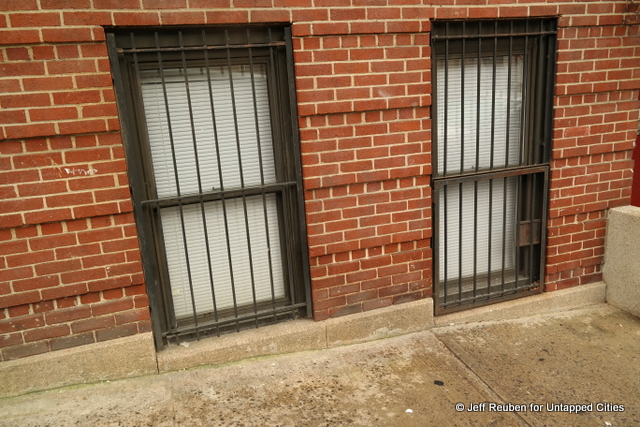 The ubiquitous New York window grille
The ubiquitous New York window grille
In their most utilitarian form, window grilles consist of vertical and horizontal metal bars with the unfortunate resemblance to a prison cell. Sometimes, the straight lines are jazzed up a bit, with some curving or geometric shapes, which seems like lipstick on a pig.
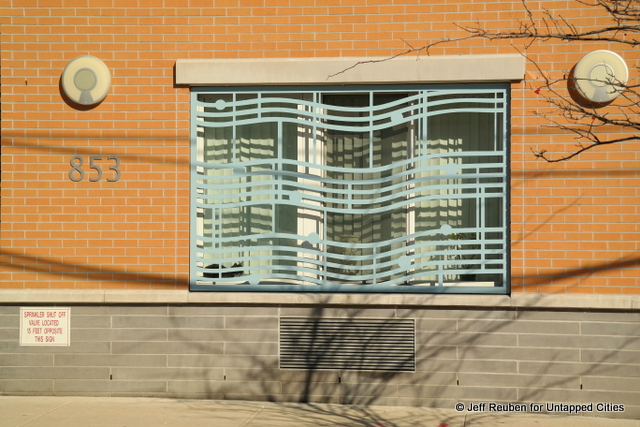 The Melody, 853 Macy Place, Longwood, The Bronx
The Melody, 853 Macy Place, Longwood, The Bronx
As an alternative, we feature the work of two artists, who each in her own way is creating window grilles and related elements that are both functional and artistic. We also look at a building that has expanded the concept to encompass a decorative gate that serves as a visually porous buffer between the public and private spheres.
Béatrice Coron: Bringing Art to Life
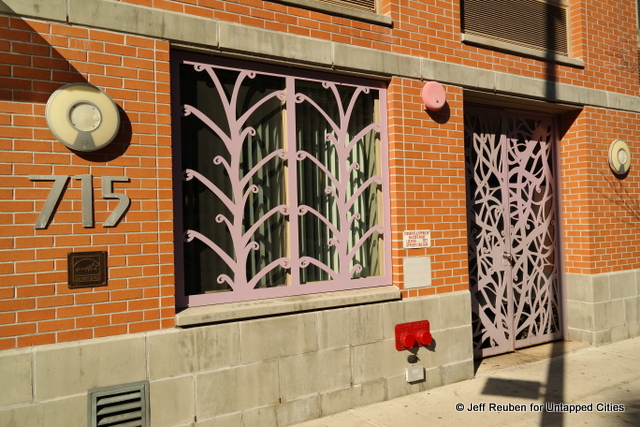 Gen. Colin L. Powell Apartments, 715 Fox Street, Longwood, The Bronx
Gen. Colin L. Powell Apartments, 715 Fox Street, Longwood, The Bronx
Béatrice Coron, a French-born, New York-based artist, has had her paper cut work displayed at the Metropolitan Museum of Art and the Getty, among many others. She has also done a number of public art projects working in cut metal and cut glass. In her art she uses silhouette images as a form of visual storytelling.
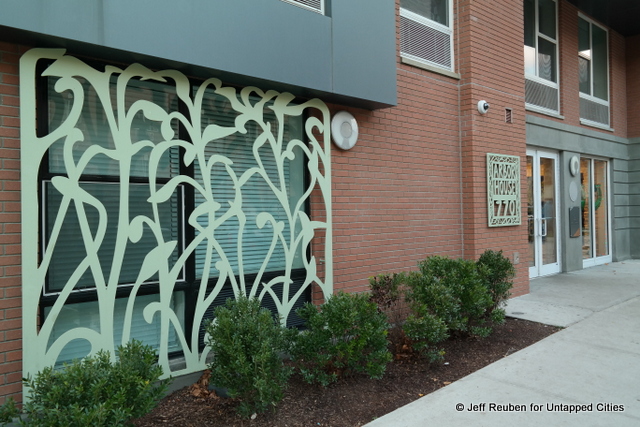 Arbor House, 770 E. 166th Street, Morrisania, The Bronx
Arbor House, 770 E. 166th Street, Morrisania, The Bronx
Through word of mouth, Coron’s work came to the attention of Blue Sea Development, an affordable housing developer in the South Bronx. Blue Sea takes a holistic approach to its buildings, which have been models of green building, sustainability, and active design. The developer also wanted to incorporate art into its projects.
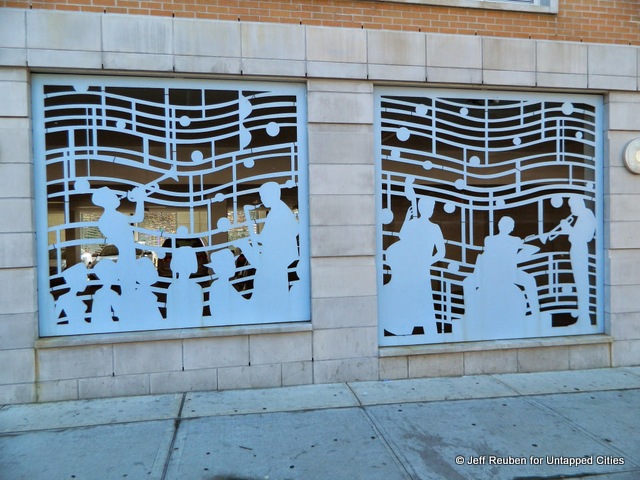 The Melody, 853 Macy Place, Longwood, The Bronx
The Melody, 853 Macy Place, Longwood, The Bronx
Over the last several years, Coron has designed window grilles and other cut metal elements for four Blue Sea buildings. She has created designs that reflect the personality of each site. For The Melody, a building in Morrisania located near the legendary music store Casa Amadeo and in an area with a rich jazz history, she used a musical motif for window guards and other cut metal elements.
At Arbor House, a LEED Platinum-certified building, Coron told Untapped Cities that the nature-themed designs used for the window grilles were created in workshops she conducted with neighborhood children.
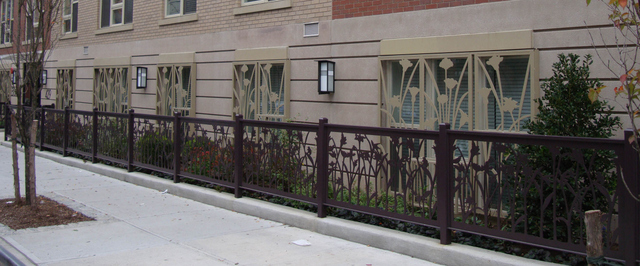 The Eltona, 429 E. 156th St., Melrose, The Bronx. Photo courtesy of Béatrice Coron
The Eltona, 429 E. 156th St., Melrose, The Bronx. Photo courtesy of Béatrice Coron
In addition to providing a visual benefit, Coron’s window grilles also satisfy design criteria for spacing to ensure that they also meet security needs.
On Tuesday, March 8th, at 6:30 PM, Béatrice Coron will deliver an Artisan Lecture at the General Society of Mechanics and Tradesmen at 20 W. 44th Street, Manhattan.
Kristina Kozak: Functional Art
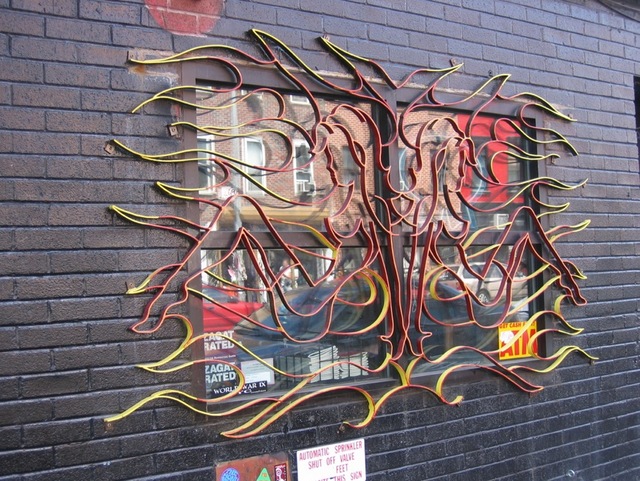 Trash Bar, Williamsburg, Brooklyn. Photo courtesy of Kristina Kozak
Trash Bar, Williamsburg, Brooklyn. Photo courtesy of Kristina Kozak
Another designer of artistic window grilles is artist-slash-metalsmith Kristina Kozak. Her specialty is creating custom, distinctive work in existing buildings. She has created grilles and other metalwork for apartments and small businesses in Brooklyn, many in and around Williamsburg where she is based. Each project is designed to suit the client’s existing decor and aesthetic interests.
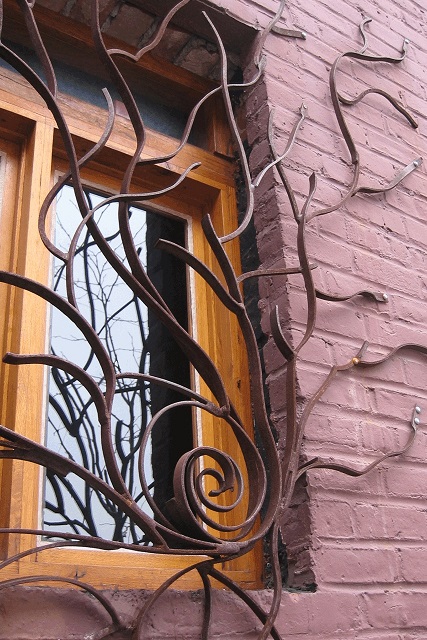 Bembe in Williamsburg, Brooklyn. Photo courtesy of Kristina Kozak
Bembe in Williamsburg, Brooklyn. Photo courtesy of Kristina Kozak
Kozak, a graduate of the Master of Fine Arts program at Michigan’s Cranbrook Academy (where Eero Saarinen and his parents once taught), is a proponent of functional art. She first got into window grille design when a friend asked her to create a grille that would provide protection and be attractive.
 3 Hope Street, Williamsburg, Brooklyn
3 Hope Street, Williamsburg, Brooklyn
As a one-woman operation, she works on a small scale. She told Untapped Cities that she prefers it this way, “I get joy out of doing it all myself.” Besides this work she creates furniture, such as metal bed frames, other metalwork, and sculpture.
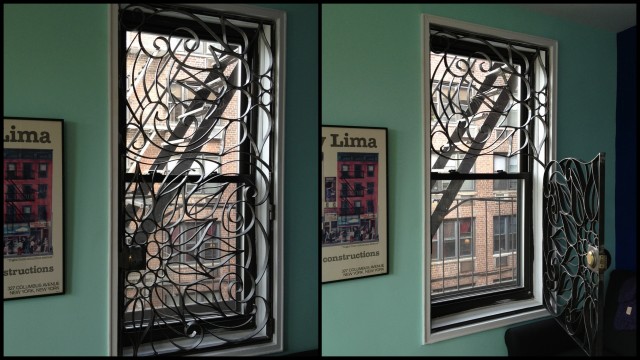 Interior widow grille. Photos courtesy of Kristina Kozak
Interior widow grille. Photos courtesy of Kristina Kozak
Beyond Window Grilles
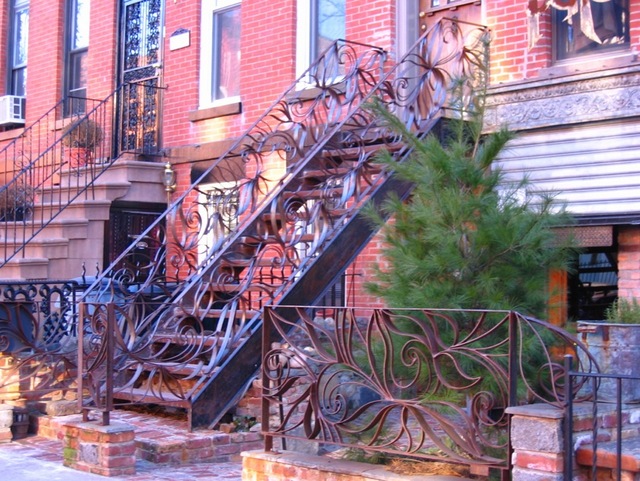 Stoop railing, Brooklyn. Photo courtesy of Kristina Kozak
Stoop railing, Brooklyn. Photo courtesy of Kristina Kozak
Coron and Kozak have each demonstrated that artistic window grilles can be part of a larger architectural metalwork vocabulary.
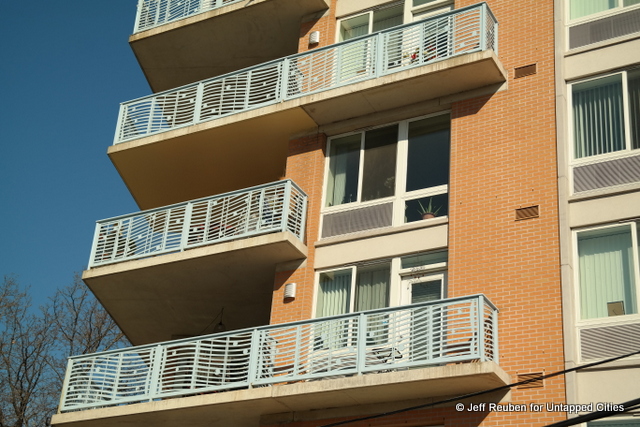
For example, at The Melody Coron designed balcony railings to complement the window grilles. Kozak has also created stoop railings and garden fencing.
40 Bond Street: Gate as Meta Window Grille
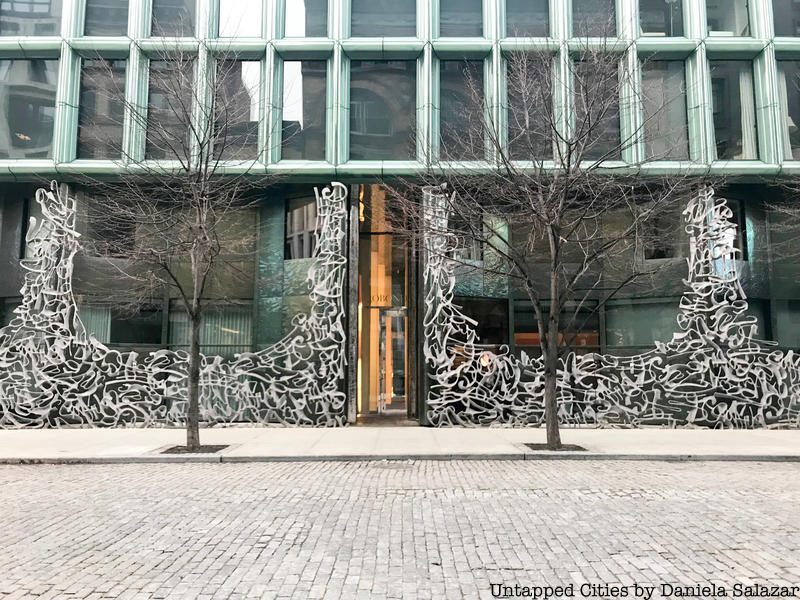
Another building, 40 Bond Street, has addressed the challenge of providing an aesthetic barrier by providing an aluminum gate stretching along the site’s entire 140-foot frontage instead of creating individual window grilles. Completed in 2007, this ultra-luxury condo in NoHo, Manhattan was developed by a team that included hotelier Ian Schrager, Handel Architects, designers Herzog & de Meuron, and Germany-based gate designer EXYD.
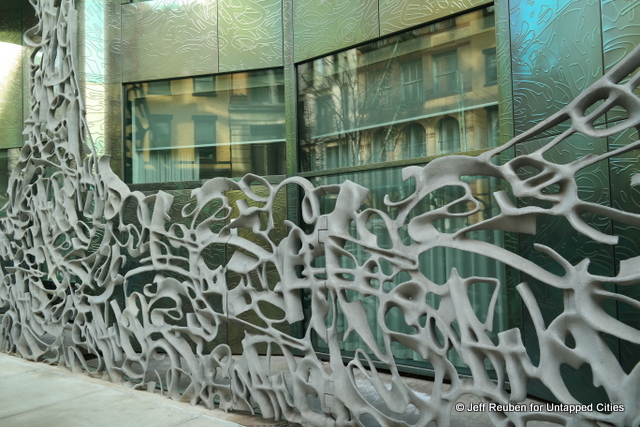
The filigree pattern of the aluminum gate is inspired by graffiti, a nod to the area’s (once) gritty character. Schrager also described the gate as in the style of Spanish architect Antonio Gaudi. The 11-story building features triplex apartments on the first to third floors and the gate provides a visually textured buffer in front of the building facade that still allows a view through it in both directions.
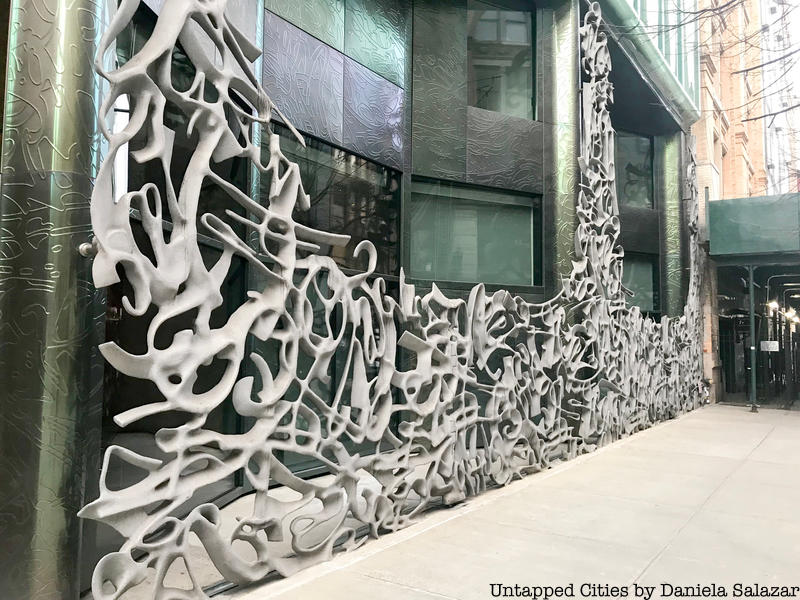
The irony is that the gate has become such an iconic feature that many visitors come to admire and photograph it. It is a very high-profile privacy barrier.
Looking forward, it will be interesting to see if others pick up on examples offered by Coron, Kozak, and 40 Bond Street to further explore features that address the functional needs of buildings and which also enhance the visual character of buildings and their surroundings.
Next, read about the windows that saved a building; the hidden history of 24 Bond Street, the birthplace of NYC’s DIY scene; and the Arts for Transit public art program. Contact the author @Jeff_Reuben





